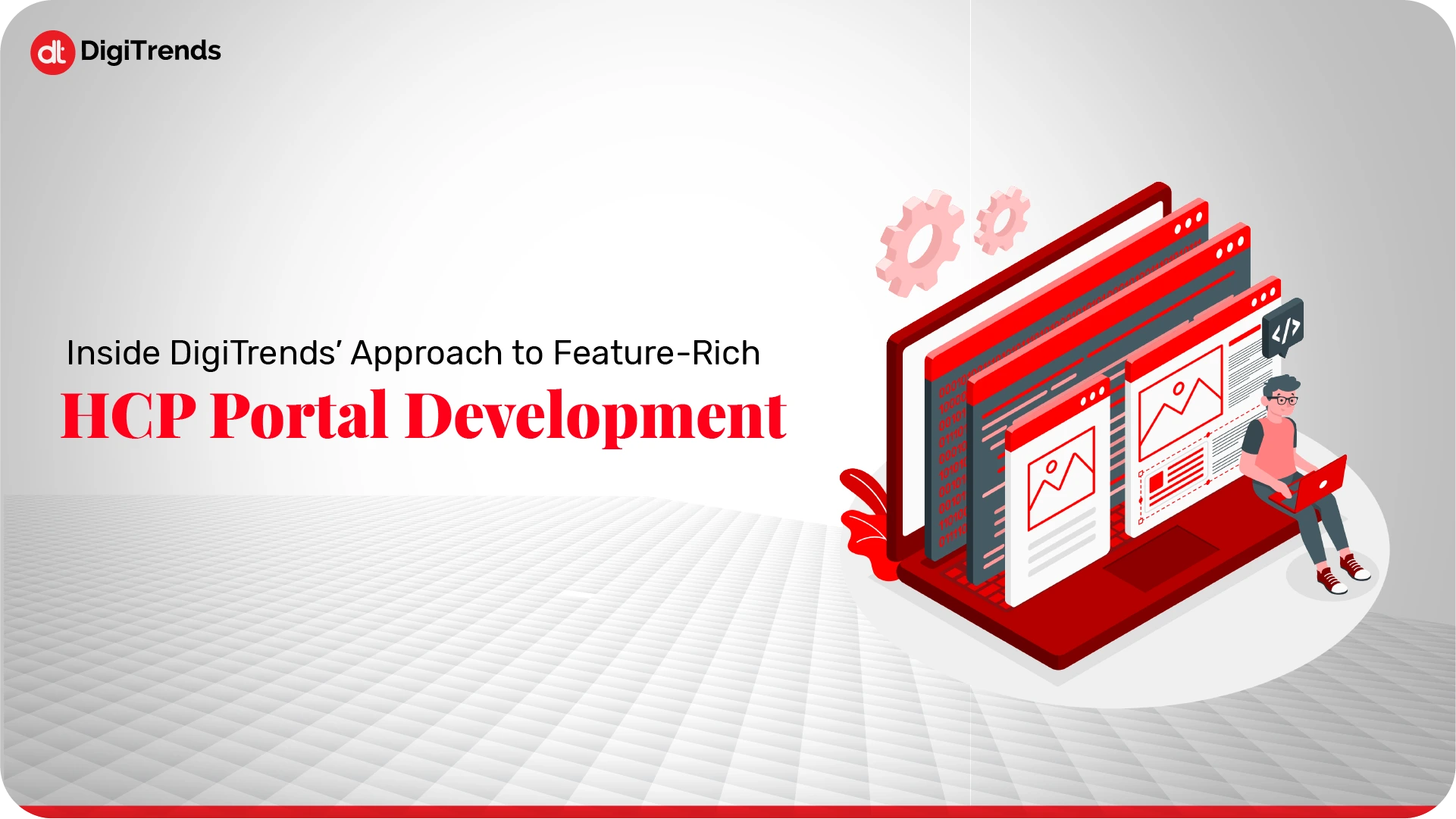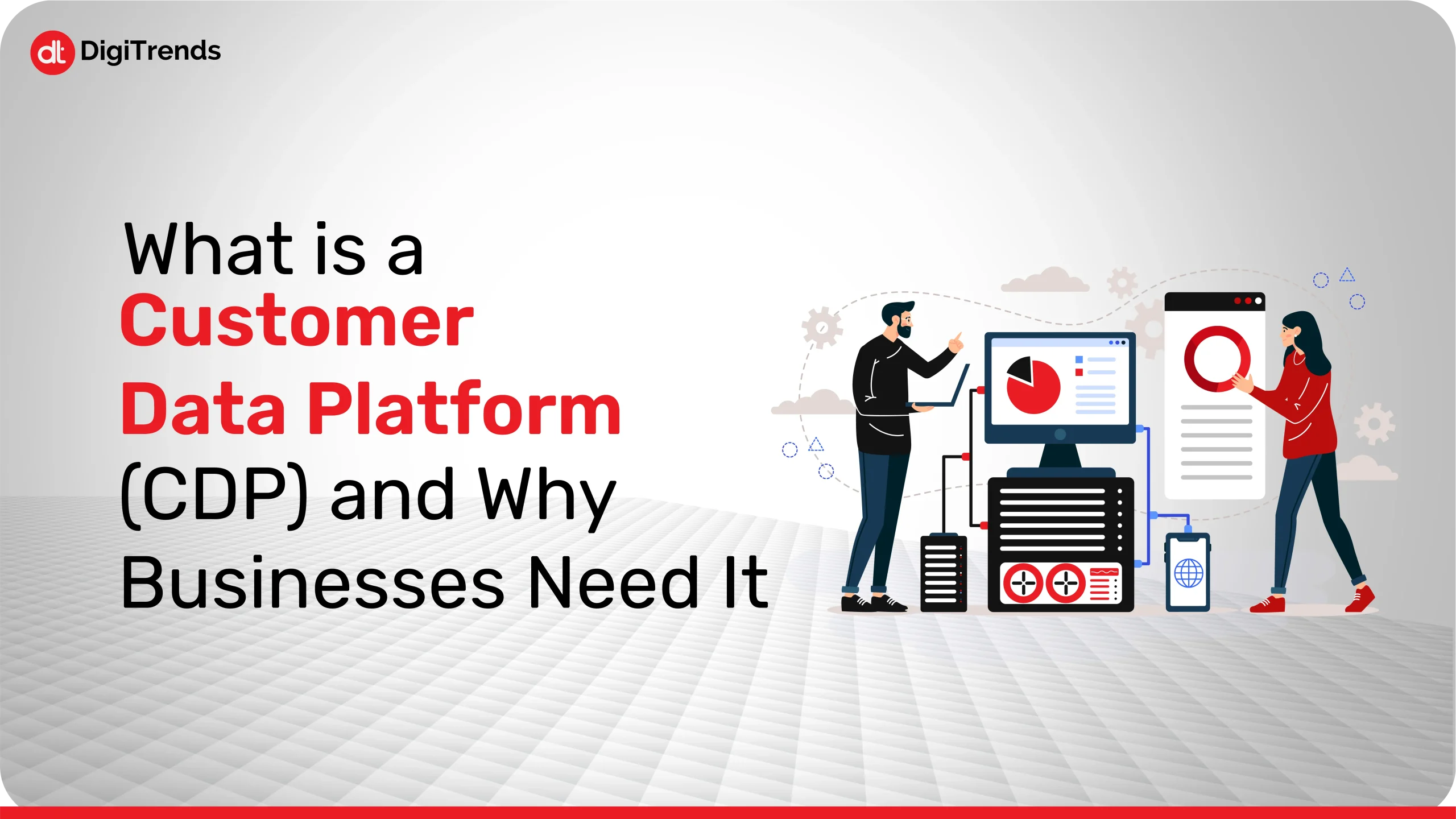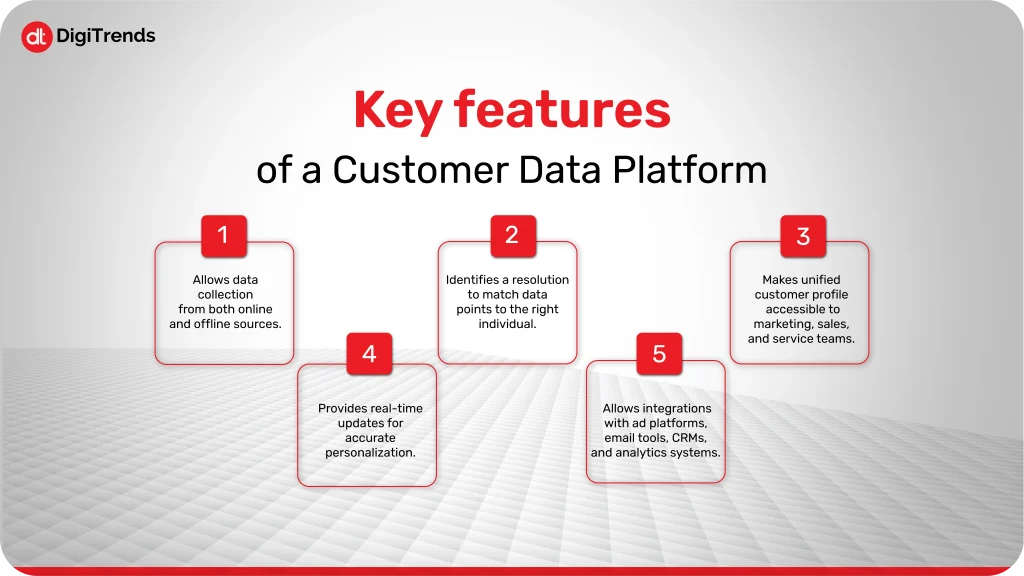
Inside DigiTrends’ Approach to Feature-Rich HCP Portal Development
Explore how DigiTrends approached HCP Portal Development with features like webinars, telemedicine, online CMEs, and more.
Continue Reading
Today, almost every business is backed by a ton of customer data.
Customer data significantly helps businesses in gathering valuable insights, which further help in crafting new strategies, setting new goals, and changing things up. Customer data can be considered anything from website clicks, purchase history, social media engagement, to in-store interactions.
Although all this data is very useful for businesses, it is often spread across different platforms like CRMs, analytics tools, ad platforms, and spreadsheets. The scattered data can be difficult to analyze, and strategizing based on this data can take up a lot of time.
If this data could be viewed under one single platform, it would be easier for businesses to understand their customers’ wants, needs, and even expectations. Customer data in a unified view will also help in creating personalized experiences for the customers.
Customer Data Platform (CDP) offers exactly that. It is designed to gather data from different sources, clean it, unify it, and make it accessible for businesses. This platform can be called a magical tool for business leaders and CMOs as it is a strategic necessity in today’s business landscape.
Explore what a customer data platform is, how it works, why businesses need a CDP, and how it is different from other tools like CRMs and DMPs. We’ll also explore real-world use cases and challenges of employing this platform in business.
A customer data platform is a software that gathers customer data from various channels and systems, organizes it, and creates a single platform to view all the gathered data. The profile created by this software keeps updating the data, which helps businesses with real-time personalization, better marketing, enhanced customer service, and well-thought-out business decisions.
Think of a CDP as the central nervous system of customer data. It integrates with all your touchpoints, your website, mobile app, email marketing, CRM, social media, call centers, and even offline sources like point-of-sale systems.
It then connects the dots, so instead of seeing fragmented bits of information, you get a complete story of who your customers are and how they interact with your brand.

1. Allows data collection from both online and offline sources.
2. Identifies a resolution to match data points to the right individual.
3. Makes unified customer profiles accessible to marketing, sales, and service teams.
4. Provides real-time updates for accurate personalization.
5. Allows integrations with ad platforms, email tools, CRMs, and analytics systems.
If you are looking to unscatter your customer data and access it on one platform for actionable insights, then a customer data platform is the best bet for you.
Before making a purchase, a customer goes through the website, interacts with the brand or business through multiple channels, and that data is useful for the business in making strategic decisions based on the customer activity across different channels.
A customer data platform provides a unified view of everything from customer activity and interactions to touchpoints. It can easily gather behavioural data, transactional data, and demographic data of the customers. Businesses can further utilize all this information in making significant decisions in the business regarding marketing campaigns, content, and user experience, all of which would be personalized according to the customer’s expectations.
Let’s break it down:
Without the presence of a CDP, the customer data is scattered across multiple platforms. Different teams can access limited data, insights, hence the decisions are often based on one version of the data. This leads to missed opportunities and poor customer satisfaction strategies. With a CDP, businesses can access the data in one view and avoid making these mistakes.
Looking at the customer behaviour today, they demand a high level of personalization, due to which generic campaigns don’t perform well. With the help of a customer data platform, businesses can easily segment customers based on their behaviour, preferences, and lifestyle stage. This segmentation allows businesses to come up with personalized offers, especially crafted content, and better product recommendations.
Spending on marketing tactics without fully knowing the expectations of customers is a waste of time, money, and resources. These tactics often fail to gain traction, whereas spending on marketing with the right knowledge and targeting the audience with a message that can resonate with them is a logical move. It also makes campaign measurement more accurate, so you can optimize for better returns.
With unified, real-time data, leaders can make faster, smarter decisions. Whether it’s adjusting product strategy, refining customer journeys, or reallocating budgets, a CDP gives you the insights to act with confidence.
With regulations like GDPR and CCPA, handling customer data responsibly is non-negotiable. CDPs help manage consent and ensure that data usage complies with privacy laws, reducing risk.
A common question regarding CDP is, How is it different from other platforms such as CRM and DMP?
A CRM (Customer Relationship Management) system is used by businesses to manage relationships and track sales interactions. This system is mainly used by the sales team and is focused on the data of known customers. On the other hand, CDP gathers the data of known and anonymous customers and creates a unified profile of that data, which serves multiple departments. Where CRM shows you sales interactions, CDP shows you the full customer journey.
A DMP (Data Management Platform) is mainly used for advertising. It collects third-party, cookie-based data to help run targeted ad campaigns. The problem is that DMP data is often temporary and anonymous. A CDP uses first-party data that is more reliable, long-term, and customer-specific, making it far more valuable for personalization.
CRM = relationship management.
DMP = ad targeting.
CDP = unified, long-term customer view.

Every customer touchpoint contributes to a single, dynamic profile. This eliminates guesswork and helps you understand what customers want.
CDPs enable you to respond instantly to customer actions. For example, if someone abandons a cart, they can immediately receive a relevant offer via email or push notification.
Go beyond demographics. CDPs allow you to segment based on behaviors, purchase history, engagement level, and more.
Managing customer consent and ensuring privacy compliance is easier with a CDP. This builds trust and reduces legal risks.
When marketing, sales, and customer service all work from the same data, strategies are more aligned, communication is consistent, and results improve.
The uses of CDP are not limited to only one sector; it can be used in different industries.
Let’s have a look:
It can be used in retail and e-commerce businesses to personalize product recommendations, reduce the number of cart abandonments, and optimize loyalty programs.
It can be used in the healthcare industry to provide patients with personalized health communications while maintaining compliance.
CDP can be used in the finance sector to deliver secure, specially crafted financial advice and improve fraud detection.
CDP can be used in this industry to improve lead scoring, streamline account-based marketing, and mature prospects more effectively.
Like every other tool, platform, or system, CDP also comes with its own set of challenges.
Let’s have a look:
Cost: CDPs require upfront investment in both software and expertise.
Integration: Connecting current procedures and systems can be a little complex.
Internal Alignment: The Success of implementing this system requires alignment in teams; without collaboration, even the best CDP will fail to perform.
At DigiTrends, we understand that implementing a CDP is not just about the technology; it’s about aligning it with your business strategy by helping:
Identify the right CDP for their goals.
Design a roadmap for integration with existing systems.
Ensure compliance with data privacy regulations.
Whether you’re a business owner aiming for growth or a CMO looking to deliver personalization at scale, DigiTrends can guide you through every step. With our expertise in digital transformation and data solutions, we will make sure your investment in a Customer Data Platform delivers real results.

In today’s data-driven world, a customer data platform is a necessity for businesses to thrive in their industry. Businesses can easily unify customer information, enable real-time personalization, and ensure compliance. A CDP helps businesses deliver experiences that build loyalty and drive growth.
This is the right time to implement a better system for your customer data to change your game and gain a competitive advantage.